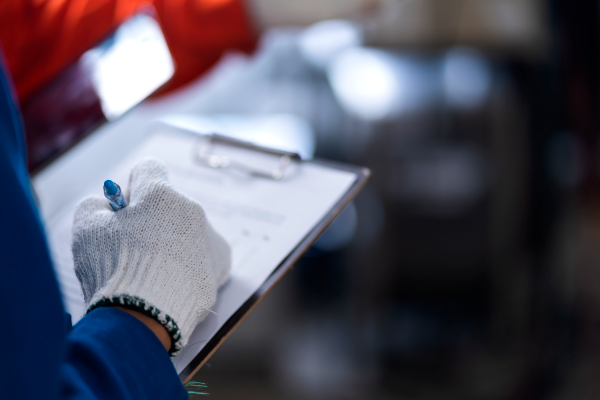Routine inspection is a type of inspection that is critical to machine condition monitoring. At its best, inspection seeks and finds the root causes. Following that, an examination must seek those elusive incipient failure situations.
Machine Inspection
Keeping spares and standby gear in good working order may be challenging. Machines and vital replacement parts must be stored in a "ready for operation" state for years.
The ability of a lubricant's additives to suppress corrosion is neutralized when additives cannot circulate. Looking for water entrance sites and the existence of invasive water is high on the list for a variety of reasons.
Many machines are flooded with oil during storage to cut air movement between the headspace and the atmosphere. This also keeps inside surfaces oily, which would be exposed to condensation and other air impurities otherwise.
These surfaces would include all bearings and internal shafts in gearboxes. These flooded devices are prone to leaking over time due to hydrostatic stresses through gaskets and lip seals. All leakage evidence, from wetness to oil puddles, should be documented and remedied.
Start-up Stage

It is said that a machine is most prone to failure after commissioning, significant repairs, or teardown. These events represent critical phases of change, which pose a danger to machine reliability.
There is also the human element. When operators, mechanics, and maintenance workers alter a machine, it is often difficult to return it to the previous operating state. Despite all good intentions, any intrusive event presents a danger. There must be a compelling reason before pulling down any mechanism. Explore all non-intrusive options first.
A thorough and continuous inspection and condition monitoring is an excellent countermeasure to avoid start-up risk. Respect all potential areas of danger. Examine as many of these threats as possible until operational stability is restored.
Run Stage
For all machines under your care prone to breakdown, there is a critical need for Inspection 2.0 vigilance. These are the machines that have been pushed over their design boundaries. They are most responsible for business interruption, lost production, and the costs of downtime and repair.
Stop Stage
Stop inspections provide you access to those difficult-to-reach machine conditions and frictional surfaces. But avoiding unnecessary invasions that can introduce a root cause for failure would be best.
Repair Stage
Repair inspections present a valuable opportunity. This involves what failed and why it failed and what else you can observe while performing the autopsy.
Part of the answer is culture. Asking a maintenance company to detect problems involves inherent difficulties for which there is no simple answer. Building a culture of continuous improvement goes a long way.
Reliable Prediction of Incipient Failure
Implementing maintenance programs to diagnose incipient machine failure through oil analysis entails cost. As such, thorough planning is needed to ensure that your resources are well-spent. With CRE Philippines, you will be confident to start your MachineDiagnostics Program through oil analysis with our full support at every step.
We also offer various training to help diverse industries meet their reliability targets and establish world-class maintenance strategies. To lengthen the life of your equipment, the root cause of any underlying issue must be understood and addressed, which can be achieved by having in-depth knowledge of Oil Analysis. You can learn how to leverage your Oil Analysis Program to achieve high uptime, zero surprised breakdown, and higher returns with our Oil Analysis II training that will be held on March 8 to 11, 2023. We also have an Infrared Inspection I training on June 13 to 17, 2023, and a Vibration Analysis I training on July 18 to October 21, 2023.
Source:
Fitch, J. (n.d.). The 5 States of Machine Inspection 2.0. MachineryLubrication. Retrieved from https://www.machinerylubrication.com/Read/30770/machine-inspection-states


